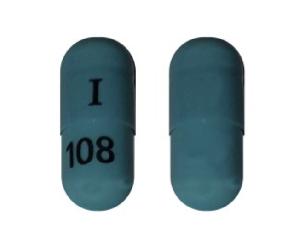Atomoxetine Interactions
There are 367 drugs known to interact with atomoxetine, along with 9 disease interactions, and 2 alcohol/food interactions. Of the total drug interactions, 86 are major, 268 are moderate, and 13 are minor.
- View all 367 medications that may interact with atomoxetine
- View atomoxetine alcohol/food interactions (2)
- View atomoxetine disease interactions (9)
Most frequently checked interactions
View interaction reports for atomoxetine and the medicines listed below.
- Abilify (aripiprazole)
- Adderall (amphetamine / dextroamphetamine)
- Adderall XR (amphetamine / dextroamphetamine)
- Benadryl (diphenhydramine)
- Claritin (loratadine)
- Concerta (methylphenidate)
- Cymbalta (duloxetine)
- Fish Oil (omega-3 polyunsaturated fatty acids)
- Flonase (fluticasone nasal)
- Lamictal (lamotrigine)
- Lexapro (escitalopram)
- Lithium Carbonate ER (lithium)
- Metoprolol Succinate ER (metoprolol)
- Nurtec ODT (rimegepant)
- Ozempic (semaglutide)
- Prozac (fluoxetine)
- Ritalin (methylphenidate)
- Seroquel (quetiapine)
- Trintellix (vortioxetine)
- Tylenol (acetaminophen)
- Vitamin B12 (cyanocobalamin)
- Vitamin C (ascorbic acid)
- Vitamin D3 (cholecalciferol)
- Vraylar (cariprazine)
- Vyvanse (lisdexamfetamine)
- Wellbutrin (bupropion)
- Wellbutrin XL (bupropion)
- Xanax (alprazolam)
- Zoloft (sertraline)
- Zyrtec (cetirizine)
Atomoxetine alcohol/food interactions
There are 2 alcohol/food interactions with atomoxetine.
Atomoxetine disease interactions
There are 9 disease interactions with atomoxetine which include:
- narrow angle glaucoma
- cardiac disease
- glaucoma
- hypertension
- psychiatric disorders
- liver disease
- renal dysfunction
- seizure disorders
- urinary retention
More about atomoxetine
- atomoxetine consumer information
- Compare alternatives
- Pricing & coupons
- Reviews (649)
- Drug images
- Side effects
- Dosage information
- During pregnancy
- Drug class: adrenergic uptake inhibitors for ADHD
- Breastfeeding
- En español
Related treatment guides
Drug Interaction Classification
| Highly clinically significant. Avoid combinations; the risk of the interaction outweighs the benefit. | |
| Moderately clinically significant. Usually avoid combinations; use it only under special circumstances. | |
| Minimally clinically significant. Minimize risk; assess risk and consider an alternative drug, take steps to circumvent the interaction risk and/or institute a monitoring plan. | |
| No interaction information available. |
Further information
Always consult your healthcare provider to ensure the information displayed on this page applies to your personal circumstances.


